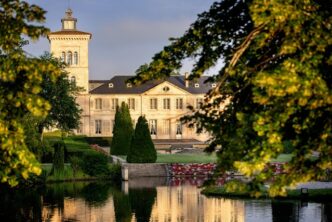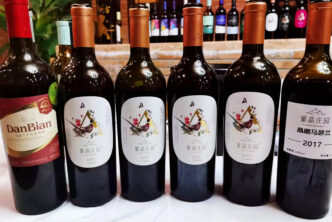伊安·达加塔著
阿尔萨斯的希万尼葡萄酒是世界上最值得购买的葡萄酒之一。不仅仅因为那些做得最好的希万尼酒品质特别出色,而且它们的价格往往只是该地区更知名的雷司令、琼瑶浆和灰皮诺葡萄酒价格的一小部分。然而,希万尼(Sylvaner)葡萄酒往往是这些葡萄酒中好的一类。显然,如果我们指的并不是那些高产的平原地区葡萄酒;而是来自阿尔萨斯山坡地区的葡萄园,它们让希万尼葡萄酒可以跻身世界上真正伟大的白葡萄酒之列。你可能会质疑:为什么会这样?业内人士和真正的葡萄酒专家都很清楚其中的原因:真正伟大的阿尔萨斯希万尼葡萄酒来自老藤,并且通常是种植在绝佳位置的老藤。没有比欧内斯特·伯恩(Ernest Burn)酒庄更好的例子了(拥有著名的Clos Saint Imer葡萄园)。
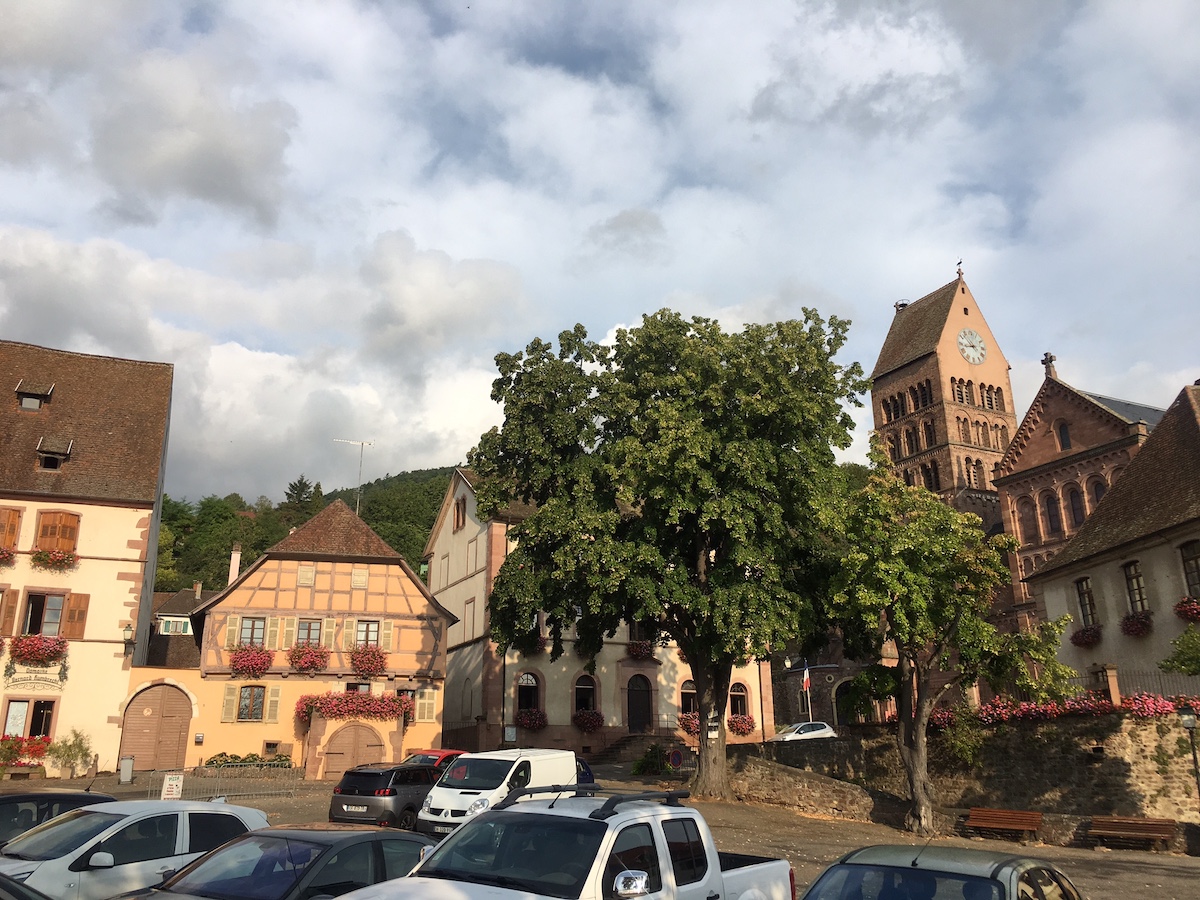
伯恩酒庄
伯恩家族在阿尔萨斯上莱茵区南部、美丽的格伯施维尔镇(Gueberschwihr)酿造葡萄酒已有400多年的历史了,尽管在1934年欧内斯特·伯恩(Ernest Burn)才正式建立了这个酒庄。正是欧内斯特·伯恩重新种植了该地区历史悠久的葡萄园,并且重建了早已倒塌的石墙。他在极具声望的Goldert葡萄园买了六公顷的土地,后来这里成为了特级园,这里可能是整个阿尔萨斯最好的麝香(Muscat)葡萄酒产地。事实上,Goldert葡萄园也非常适合琼瑶浆和灰皮诺;不过,虽然这里也种植有其他知名葡萄品种(雷司令和黑皮诺葡萄Pinot Noir),但你知道么,真正在这里表现出色的其实是希万尼葡萄。有一道石墙从中间分隔开了Goldert葡萄园和Clos Saint Imer葡萄园 (Gueberschwihr地区的守护神);在这个特级园的山顶有个小教堂也属于伯恩家族;因此,在酒标上既能看到圣人的肖像,也能发现“La Chapelle”这个字样(La Chapelle这个名称只用于该酒庄每年出产的最佳葡萄酒)。如今,酒庄由和蔼可亲、才华横溢的弗朗索瓦·伯恩(François Burn)和他的妻子经营,相比该地区大多数酒庄,他们喜欢用采摘得更晚的、更加成熟的葡萄。

希万尼葡萄
希万尼(Sylvaner是法语拼写;在德国目前写做Silvaner,尽管在过去的几个世纪里也被写做Sylvaner)是Österreichisch Weiss和Traminer(换句话说,也就是它的父母)自然杂交的结果。希万尼葡萄是一个非常美观的品种(当然吃起来也相当不错:在所有你所熟悉的酿酒葡萄里,希万尼无疑是最好吃的五个之一),也被称为绿希万尼,因为它的果实拥有非常明显的淡绿色 (除了在意大利它仅仅被称为希万尼,在所有其他种植希万尼的国家它都会有一个“绿色”的描述符连接到它的名字,譬如:在英语中叫“green Sylvaner”;德语中叫“Grüner Sylvaner”;捷克语中叫“Sylvanské Zelené”;以及在斯洛文尼亚语中叫“Zeleni Silvanec”)。这个对颜色的描述是必要的,因为还有一种更稀有的红色希万尼葡萄品种(更合适的方式是在不同语言中将它们称做:Sylvaner rouge,或者Sylvaner à peau rouge,亦或者Roter Sylvaner)。
虽然希万尼与雷司令(Riesling)的种植地十分类似,但它却与雷司令不同,不是特别耐寒的葡萄品种,太低的温度会对它造成损伤;事实上,它也不太喜欢太热的天气。它的生长周期比雷司令更早一些开始,发芽和成熟都要比雷司令更早,但希万尼经常被晚收(尤其在德国非常多,他们也出产希万尼冰酒),希万尼葡萄甚至可以在10月底采收(在法国阿尔萨斯产区,希万尼通常在9月采收)。希万尼的抗病能力也不是很强,容易患病,而且白粉病和霜霉菌对它都是个大问题。因此,鉴于以上种种,现在你可能多多少少了解到,为什么会有这么多人不喜欢种植这个品种;但事实上,风土适宜葡萄园的低产量老藤希万尼,可以成为你尝过的最有趣、最令人愉快的白葡萄酒之一。当然,希万尼葡萄酒的质量并不是它以前比现在更受欢迎的原因:而是因为它其实是一个非常高产的葡萄品种。如果任其发展,希万尼毫无疑问可以出产瀑布般的果汁(事实上,它也是便宜餐酒的主要来源之一,如阿尔萨斯的Gentil葡萄酒和德国的Liebfraumilch葡萄酒)。但在低产量的情况下,希万尼葡萄酒口感会更加集中、复杂,味道介于雷司令、绿威林(Grüner Veltliner)和长相思(Sauvignon Blanc)这几个葡萄品种的理想组合之间。根据其生长的土壤类型,希万尼葡萄酒的香气和风味中会带有青苹果、梨、甘菊、榅桲、森林地面、薄荷脑、新鲜薄荷和矿物质的感觉。用晚收葡萄酿制而成的干型希万尼葡萄酒会让人联想到榅桲酱和甘菊茶;当用晚收葡萄酿制成甜型希万尼葡萄酒时,那是一种甘美、华丽而性感的酒,令人难以忘怀。
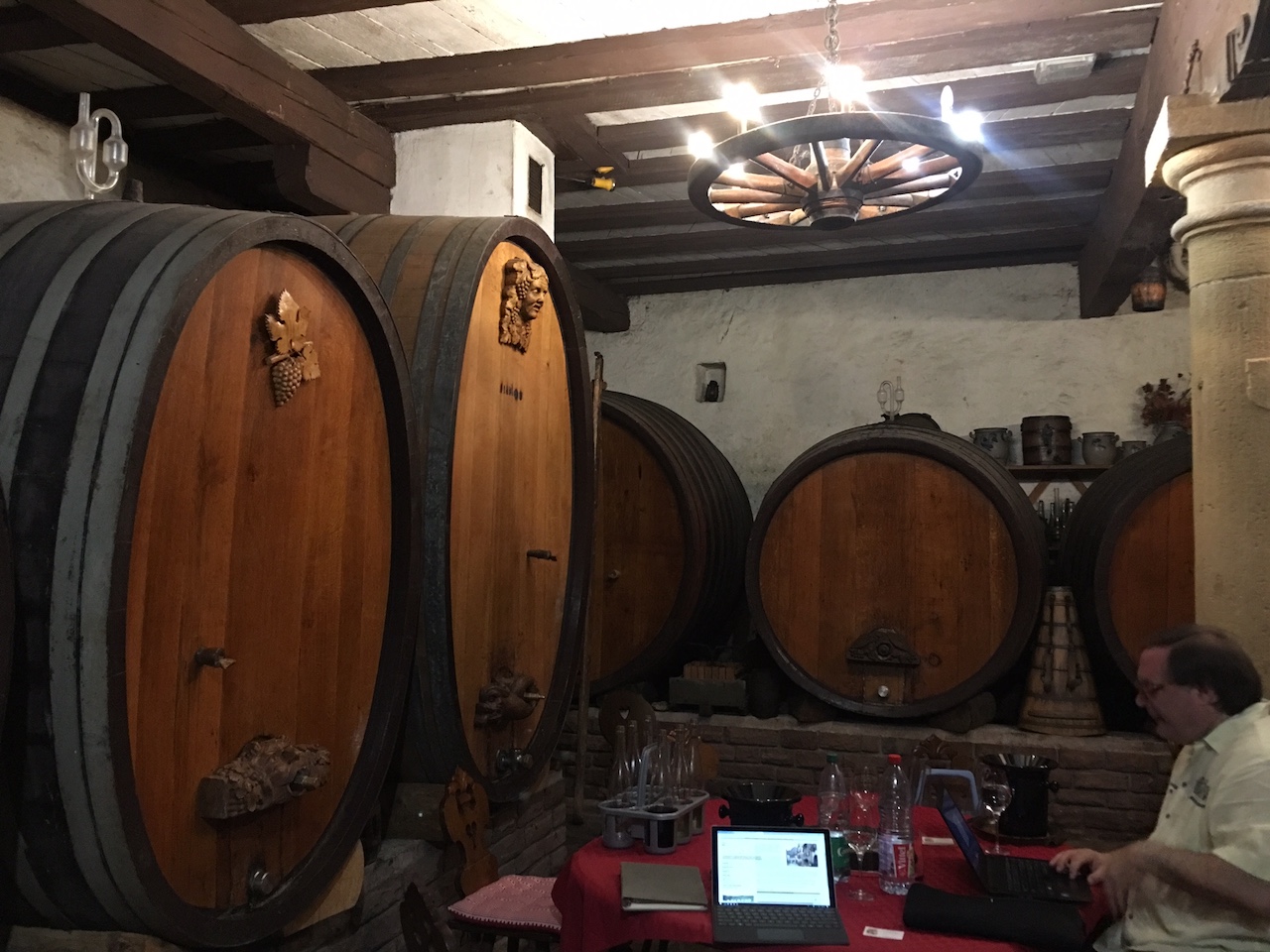
几十年前,阿尔萨斯多达30%的土地都种植着希万尼葡萄,但这个比例如今已经下降到5%。这种令人遗憾的现象源于一项葡萄酒法律,它绝对可以被列为最愚蠢的葡萄酒法律之一:1975年的阿尔萨斯葡萄酒法律未能将希万尼葡萄列入“贵族品种“,只命名了雷司令,琼瑶浆,灰皮诺和两个麝香葡萄品种(希万尼不应该受到不公正待遇:提出这点的原子物理学家也将黑皮诺排除在“贵族品种”之外,当然他们现在又开始修改)。因此,就像欧塞瓦(Auxerrois)和白皮诺,与希万尼一样,这些品种制成的葡萄酒不能被贴上特级园“grand cru”的标签,这意味着这些酒售价甚至远低于一些口感寡淡甚至是难以下咽的阿尔萨斯灰皮诺,琼瑶浆和雷司令葡萄酒,这些特级园酒比起葡萄酒,反而更像糖水,(但它们仍能够很好地卖出,就是由于标签上的特级园名字)。这种情况让许多生产商放弃希万尼转而种植“贵族品种”,导致灰皮诺等“贵族品种”被大范围种植,只是为了跟风“特级园”这一名号并从中获利,而这些葡萄通常都种植在不太理想的地点。为了抵制这种官僚主义作风,政府工作人员做好了自己的本职工作,后来将种有希万尼的Zotzenberg葡萄园破例列为特级园:种植在这里的希万尼酿成的葡萄酒可以标记为特级园,但在一些其他也完全适合种植希万尼的特级园中,如Zinnkoepfle和Goldert,却不能同样施恩于希万尼(即使希万尼种植在特级园中,最终也不能标为特级园字样)。
幸运的是,阿尔萨斯的优质葡萄酒领导者并没有放弃他们的老藤希万尼葡萄酒。除了伯恩酒庄之外,其他酿造出优秀希万尼葡萄酒的生产商(按字母顺序排列)还有:Agathe Bursin, Albert Boxler, Albert Seltz, Barmès-Buecher, Dirler-Cadé, Josmeyer, Kuentz-Bas, Muré, Ostertag, Seppi Landmann和Trimbach等等。
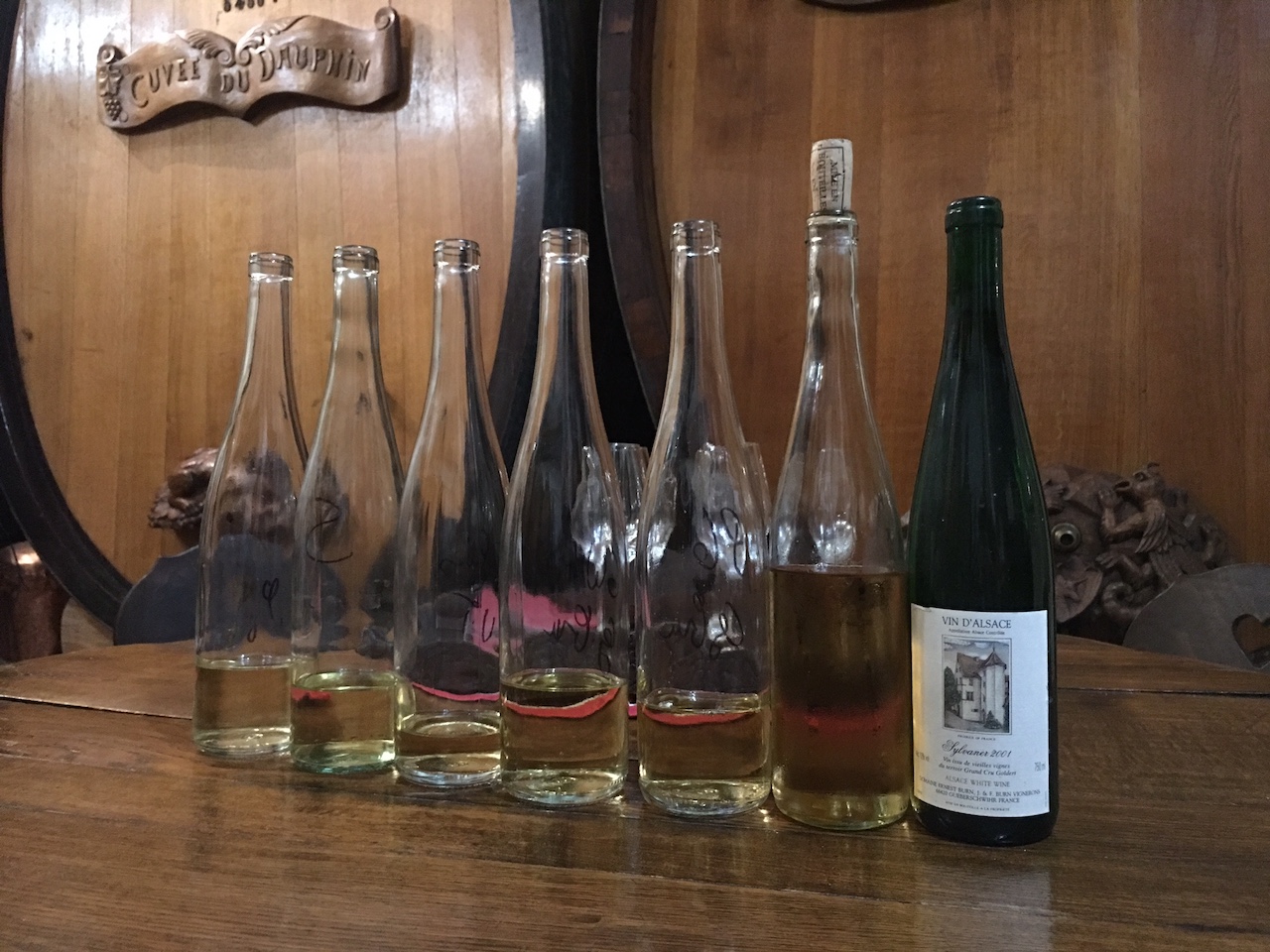
垂直品鉴
伯恩酒庄在两个非常古老的地块上种植了希万尼,是大约60年前由欧内斯特·伯恩(Ernest Burn)在Goldert葡萄园用马瑟拉选种(massal selections)方法精选出的葡萄藤。Goldert葡萄园独一无二的风土赋予了葡萄酒伟大的特性:相对阳光充足但同时非常凉爽(葡萄园朝东,海拔介于230米和330米之间,相当陡的山坡,从山顶往下慢慢变得平缓),土壤大多是很深的泥灰岩-石灰岩(事实上,Goldert是唯一一个地质基质完全是鲕石石灰岩构成的特级园),它能够赋予希万尼葡萄酒丰富度,复杂度,层次感以及总是引人注目的酸度。因此,这款酒与那些在砂岩和壤土上酿造的酒体轻的年轻希万尼葡萄酒截然不同。伯恩酒庄的希万尼葡萄酒本来也是供给给当地人的餐酒,在当地餐馆以长颈瓶售卖,但很快大家发现,它实在太出色了,不应该被这样对待。因此,酒庄开始将希万尼葡萄酒装瓶,多年来产量被控制的越来越低,以便酿造出更浓缩、更适宜陈年的葡萄酒。弗朗索瓦·伯恩告诉我,他现在的产量只有当年欧内斯特刚开始酿酒时的一半左右。事实上,这并不是多年来发生的唯一变化:大约三、四年前,伯恩酒庄的希万尼葡萄酒一直都是非常甜的,好像晚收甚至是贵腐酒一样甜,而现在他的葡萄酒几乎是干型的。部分葡萄几乎总是受到贵腐菌(取决于年份)的影响,这极大地增加了这款希万尼葡萄酒的肥美口感和复杂度。在任何情况下,非常老的葡萄藤和低产量(40百升/公顷),再加上伯恩酒庄喜欢在周围每个人都完成采收后再采摘极其成熟的葡萄,让伯恩酒庄出产的阿尔萨斯希万尼葡萄酒熠熠生恢,这不仅是法国最值得购买的葡萄酒,也是我认为全世界最值得购买的葡萄酒。
2017 Alsace Sylvaner 92
Pale golden-yellow. Inviting aromas and flavors of chestnut honey, quince, baked cinnamon apple pie, citrus peel and minerals. At once powerful but light on its feet, juicy yet tactile, with lingering citrus peel and vanilla custard flavours. It’s a remarkable wine given that 2017 was far from ideal for Sylvaner, a variety that needs long hang time to develop and deliver more complexity in its wines. Drink: now-2026
2016 Alsace Sylvaner 93
Straw-green with golden tinges. Focused green apple, quince, nectarine, coriander, and menthol nuances on the captivating nose. Fresh but dense, with energetic flavours of apple, pear, and herbs. A big, structured Sylvaner that tastes basically dry: Burn told me he wanted to make a drier, fresher wine than some of his previous Sylvaner wines, so purposely carried out a slightly longer fermentation than usual in order to reduce the residual sugar(this has only 7 g/L r.s and only 13% alcohol). This Sylvaner wine was made from grapes picked at the end of October in three plots of roughly thirty years old vines (two of which are in the Goldert). Drink: now-2029
2010 Alsace Sylvaner 96
Bright golden yellow. Complex aromas and flavors of quince paste, marzipan, lime, candied rubharb, and a touch of minerals. Rich ripe and dense, but with a juicy quality to the lively and sweet pomaceous fruit and spice flavours. The creamy sweet finish is lifted by a zingy note of smoke and lime cordial. This is starting to complexify but is still remarkably young and will have a very long life. Tasted blind, this is a dead ringer for great Loire Chenin Blanc or a Jurançon. Drinking window: now- 2055
2001 Alsace Sylvaner 93
Dark golden yellow. Intense aromas of beeswax, propoli, quince paste, strawberry and pear are complicated by hints of underbrush and spicy botrytis. Rich, dense and juicy, with honeyed nuances to the pomaceous fruit and candied orange peel flavours. Finishes long with hints of toffee and coffee. Beautiful wine that tastes drier than the 2010. Drinking window: now-2035
1998 Alsace Sylvaner 96
Vivid medium-dark golden yellow; this is less dark than the 2001. Extremely fresh nose offers aromas of crystallized ginger, marzipan, pear, glazed kumquat, all complemented by a light touch of beeswax, plus a hint of marmelady botrytis. Rich, dense and tactile, with very precise flavours of pear, chamomile tea, chlorophyll and baked apple. Finishes long and suave, with noteworthy complexity and length plus hints of baked pear. Outstanding wine; the finish lasts for minutes. About 33% of the grapees were hit by noble rot. Drinking window: now-2038
1997 Alsace Sylvaner 91
Bright golden-yellow. Ripe aromas of poached pear and caramel, then fresh, light and lively, with a lemony and peppery zing. Fresh and juicy with a hint of caramel and coffee and minty herbs. All that flavour and only 12% alcohol! This is made from what were at the time roughly 30 years old vines including a parcel on pink sandstone that has now been replanted with Pinot Noir. Actually, none of the grapes used to make this wine came from the Goldert as the two forty years old plus parcels Burn now owns from which he makes his Sylvaner wine were bought in the 2000s. Drinking window: now-2027
1992 Alsace Sylvaner 97
Luminous golden-tinged yellow; this is much lighter and fresher in color than almost all the other wines in this tasting. Minty and mineral on the nose, with hints of delicate herbs, apple and pear plus nuances of quince: This all adds up to a very enticing nose. Spices, minerals and anacardia, plus crystallized fruit linger long on the clean suave finish. A beautiful wine that is magnificently balanced, this could easily be mistaken for a very high quality Riesling from the Pfalz. The 1992 was a vintage characterized by big yields yet this wine is remarkably concentrated and lively. Had I not know what I was being served I would have never guessed this was almost 30 years old. Drinking window: now-2035

 English
English
